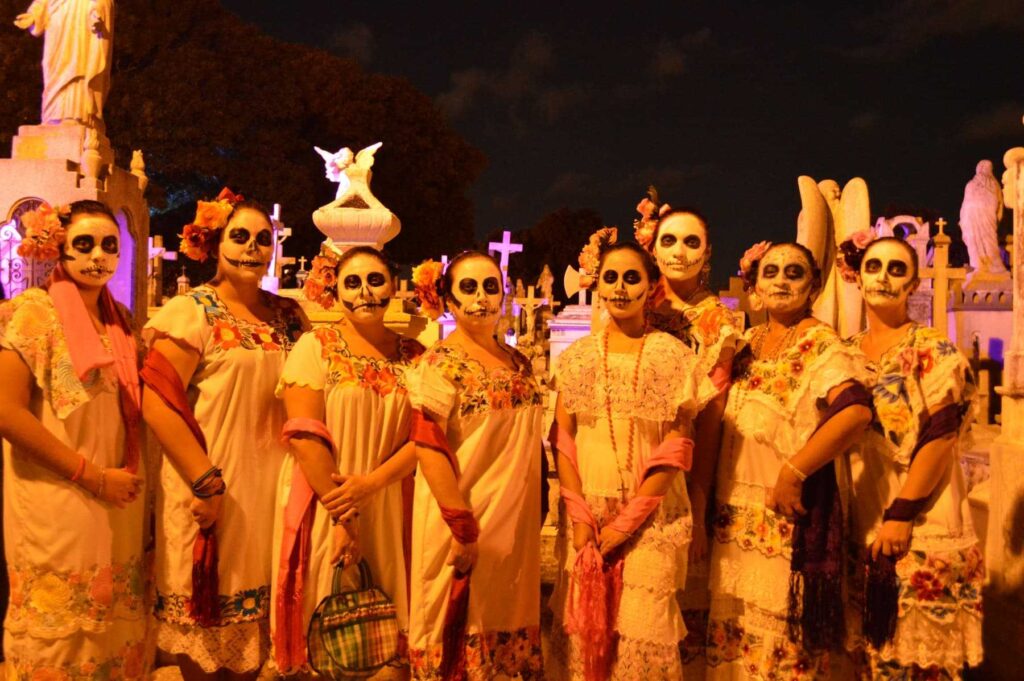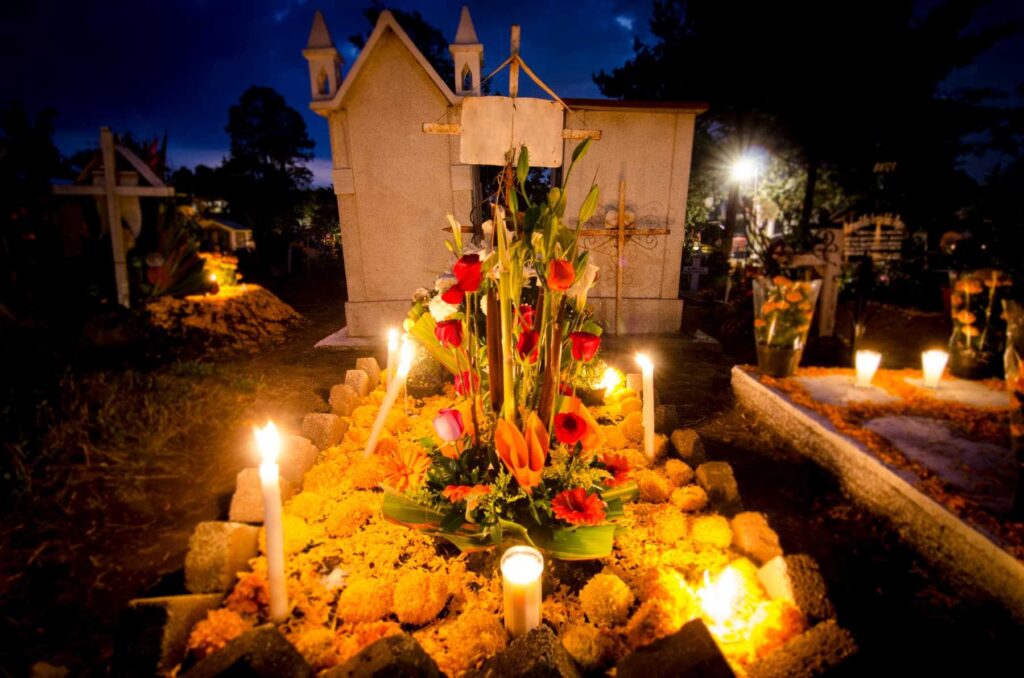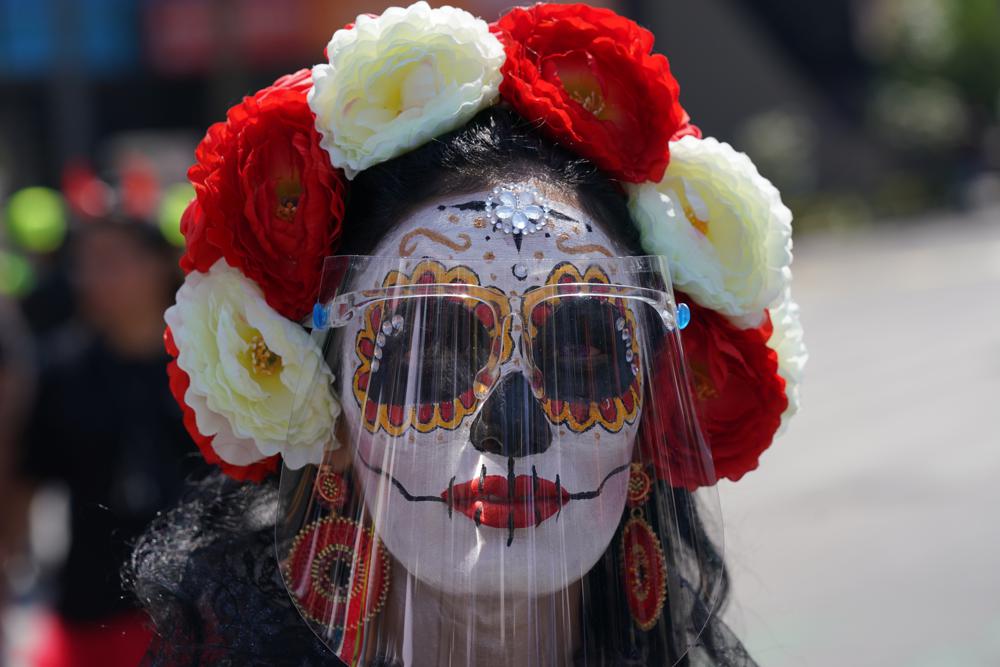Mexico on Sunday celebrated the annual holiday of ‘ Day of the Dead (Dia De Los Muertos)’. The event was canceled last year due to the coronavirus pandemic.
Thousands of people, including residents and tourists parade in the capital of Mexico City with Giant skeletons, colorful costumes, mariachi music, and dance.
In Mexico, the annual holiday of ‘Day of the Dead’ (Dia De Los Muertos) is celebrated to honor the lives of ancestors and to acknowledge the ever-revolving cycle of life and death. It’s definitely not the “Mexican version of Halloween.” In 2008, the holiday was added to UNESCO’s list of Intangible Cultural Heritage as “a defining aspect of Mexican culture.”
Day of the Dead (Dia De Los Muertos) is a two-day holiday that reunites the living and dead. Families create ofrendas (Offerings) to honor their departed family members that have passed. These altars are decorated with bright yellow marigold flowers, photos of the departed, and the favorite foods and drinks of the one being honored. The offerings are believed to encourage visits from the land of the dead as the departed souls hear their prayers, smell their foods and join in the celebrations!
Day of the Dead is a rare holiday for celebrating death and life. It is unlike any holiday where mourning is exchanged for celebration.
Day of the Dead (Dia De Los Muertos) is celebrated every year on November 1st and 2nd, just after Halloween in the United States.

Dia de los Angelitos (Day of the little angels) starts the holiday at midnight on Nov 1st, where the spirits of all deceased children are believed to be reunited with their families for 24 hours. Families construct an altar, known as an ofrenda, with the departed child’s favorite snacks, candies, toys, and photographs to encourage a visit from their departed children. The names of the departed children will often be written on a sugar skull.

At midnight of the following day (November 2nd), the celebrations shift to honor the lives of the departed adults. The night is filled with laughter and fun memories, much like the night before. However, the Ofrendas take on a more adult-like theme with tequila, pan de muerto, mezcal, pulque and jars of Atole. Families will also play games together, reminisce about their loved ones, and dance while the village band plays in their town.

The next day is the grand finale and public celebration of Dia de Muertos. In more recent times, people come together in their cities, dressed up with Calavera painted faces (Skeletons) and have parades in the streets. Cemetery visits are also common on the last day as families will go to decorate the grave sites with Marigold flowers, gifts, and sugar skulls with the departed’s name on them. It’s customary to clean the grave stone and restore the color.
(source: dayofthedead)
A global media for the latest news, entertainment, music fashion, and more.




